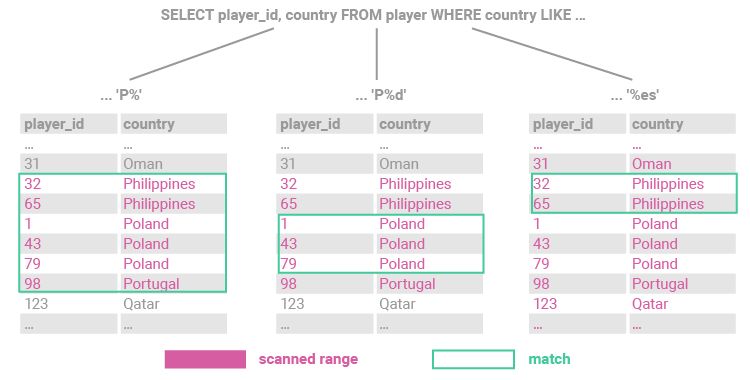Well done! So, we created an index on a VARCHAR column:
CREATE INDEX player_country_index
ON player(country);
An index on this type of column has limited usage. It can be used with an equality sign in the WHERE clause:
SELECT
*
FROM player
WHERE country = 'Portugal';
It can also be used with a LIKE operator that contains wildcards (%). However, you should remember the following rule: the index will only help narrow down the search range until the appearance of the first wildcard. Take a look at the image:

In the first case, we use LIKE 'P%'. The index can quickly find rows where the country value starts with the letter 'P', since 'P' appears before the wildcard. All such rows where the country name begins with a P are returned because all of them match the criterion.
In the second case, we use LIKE 'P%d'. The index can only find rows with countries starting with 'P'. Then, the database needs to manually check these rows and return the ones that end with a 'd'.
In the last case, we use LIKE '%es'. Because the wildcard appears as the first letter, the index on country is of no use. The database has to check every row individually.


